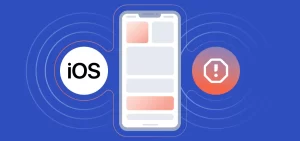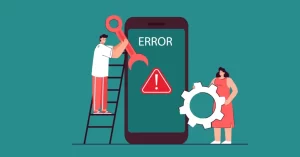One of the core components that makes seamless digital interaction possible is Random Access Memory (RAM). However, as applications become more complex and resource-intensive, improper RAM management has emerged as a leading contributor to app failures.
Whether it’s abrupt shutdowns, freezing interfaces, or sluggish performance, many issues trace back to how memory is allocated, used, and released.
What Is RAM and Why Does It Matter?
RAM is a form of volatile memory that temporarily stores data being used by the system and active applications. It’s what allows users to switch between apps instantly, load large files quickly, or play games without waiting for assets to reload every time. Unlike permanent storage, RAM prioritizes speed and is wiped clean when the device is restarted or powered off.
In practical terms, RAM is the workspace where all real-time tasks happen. When an app is launched, it loads necessary files, assets, and background processes into RAM. If this workspace becomes overcrowded or poorly managed, the app may start to misbehave—or even crash.
How Poor RAM Management Leads to App Failures
1. Memory Leaks
A memory leak occurs when an application fails to release RAM after it no longer needs certain resources. Over time, this unused data continues to occupy memory space, gradually reducing available RAM for other tasks. In long sessions, apps may slow down, become unresponsive, or crash entirely.
Memory leaks are often caused by:
- Improper coding practices where objects are not dereferenced.
- Persistent background services that accumulate unused data.
- Loops that continue allocating memory without checks.
In mobile apps, especially on Android, memory leaks are a leading cause of application termination by the operating system.
2. Excessive Memory Allocation
Some applications demand far more RAM than necessary, either due to inefficient coding or loading more assets than the device can handle. For example, a photo editing app might preload high-resolution previews for all images in a folder, consuming gigabytes of memory in seconds.
Excessive memory allocation can result in:
- Crashes during launch or after opening specific features.
- Delays in user interaction.
- System-wide slowdowns, particularly on devices with limited RAM.
3. Poor Background Task Management
Modern operating systems support background processing, allowing apps to sync data, send notifications, or continue downloads even when not actively in use. However, if an app mismanages these background tasks, it can lead to resource hogging.
Symptoms include:
- App freezing when reopened.
- Delayed notifications.
- Battery drain in conjunction with memory saturation.
In extreme cases, background mismanagement triggers the OS to forcibly close the app to reclaim memory for foreground tasks.
4. Inadequate Garbage Collection
In environments like Java or Kotlin (commonly used in Android), garbage collection automatically frees up unused memory. However, if this process is delayed or interrupted due to high CPU load, memory usage continues to grow unchecked. This increases the likelihood of the app being force-closed by the system or failing to respond during peak usage.
5. RAM Pressure in Multitasking Environments
When users run multiple apps simultaneously, RAM becomes a shared commodity. If an app doesn’t efficiently handle being paused or minimized, it may lose essential resources upon restoration, leading to instability or failure.
Examples include:
- Games crashing when resumed after checking messages.
- Video editing apps losing unsaved progress.
- Music players stopping playback unexpectedly due to memory eviction.
Platform-Specific RAM Handling Challenges
Android
Android devices use a Linux-based memory manager. Apps running in the background are often deprioritized and terminated to free up memory for the foreground task. While this behavior helps optimize performance, poorly optimized apps may not handle these state transitions gracefully, leading to unexpected crashes or lost data.
iOS
Apple’s tight hardware-software integration allows for more consistent memory management. However, iOS aggressively purges background apps when memory is low. Developers are expected to handle memory warnings effectively; otherwise, apps risk being closed without notice.
Windows/macOS
Desktop operating systems offer more RAM than mobile devices but also face larger workloads. Resource-heavy applications like web browsers or virtual machines can easily max out RAM on systems with limited capacity. If an app tries to allocate memory beyond what is available, it can crash or corrupt running processes.
Signs of RAM-Related Failures
Identifying whether an app is failing due to poor RAM management involves observing recurring behaviors:
- Frequent “Out of Memory” (OOM) errors.
- Slow performance after extended use.
- Crashes when performing memory-intensive operations (e.g., editing large files).
- Random shutdowns under heavy multitasking conditions.
These issues often appear after updates, as new features increase the app’s memory demands.
Best Practices for Developers
To mitigate RAM-related failures, developers must:
- Optimize asset loading by using lazy loading or streaming where possible.
- Monitor and fix memory leaks using profiling tools like Android Studio Profiler or Instruments in Xcode.
- Implement memory warnings effectively and unload non-essential resources.
- Test across devices with varying memory capacities to ensure broad compatibility.
- Limit background service usage to what’s absolutely necessary.
Tips for End Users
While users can’t control how apps are built, they can take proactive steps to avoid RAM-related app failures:
- Keep the system updated to benefit from OS-level memory optimizations.
- Close unused apps manually to free up RAM.
- Avoid running multiple heavy apps simultaneously on low-RAM devices.
- Clear app cache periodically, especially for resource-heavy apps like browsers or streaming services.
- Restart the device regularly to refresh memory allocation.



